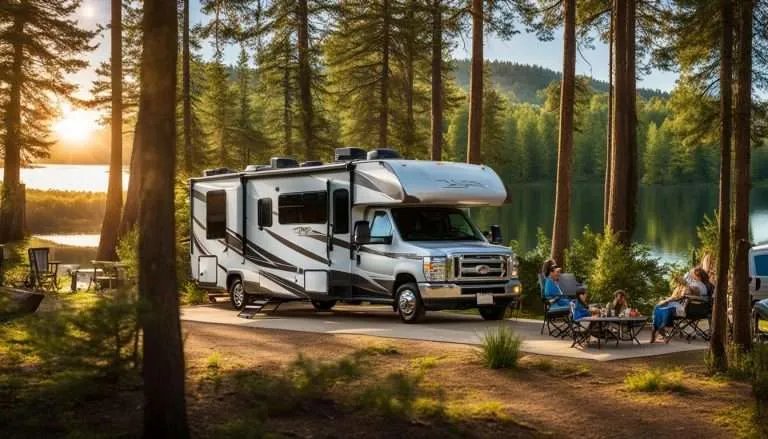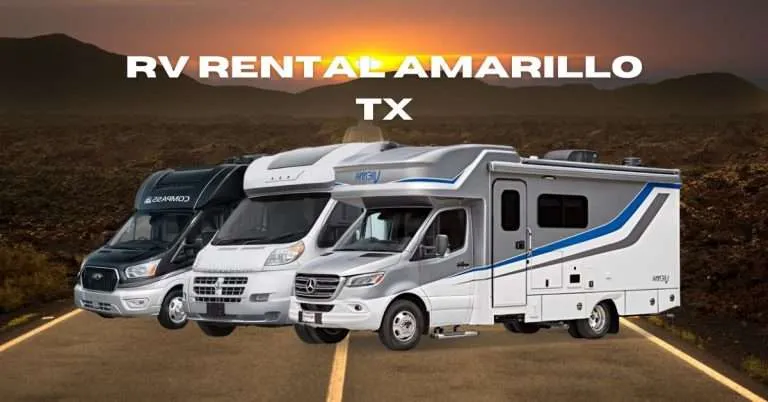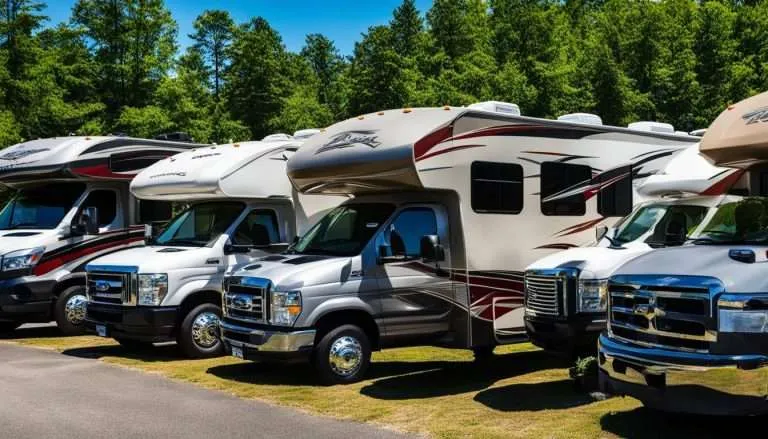Why Do My RV Lights Dim and Brighten? Understanding Voltage Fluctuations

When I first noticed the lights in my RV dimming and brightening, I knew something wasn’t quite right.
This fluctuation was more than just a minor annoyance; it was a sign that there could be an underlying issue with the RV’s electrical system.
Electrical inconsistencies can arise from different components within the RV and understanding these can be vital for both the comfort and safety of your travels.
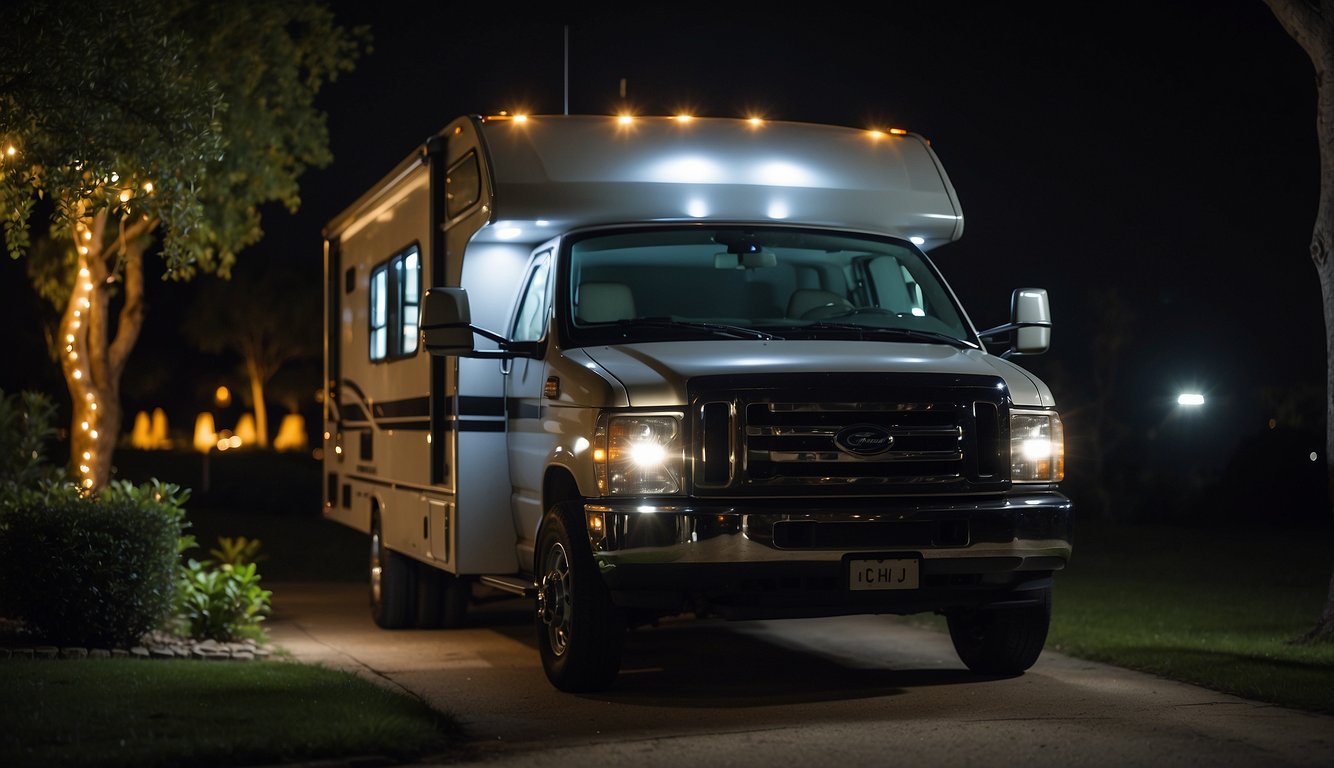
In my experience, pinpointing the cause of the fluctuation requires a methodical approach, considering everything from the state of the battery to the performance of the power converter.
It’s important to remember that dimming lights don’t just affect the ambiance inside the RV; they could also be symptomatic of a problem that, if left unchecked, could lead to more significant concerns down the line.
Key Takeaways
- Light fluctuations in an RV often indicate issues with the electrical system.
- Identifying the cause is essential in preventing potential safety hazards.
- Regular maintenance is key to ensuring consistent lighting and electrical performance.
Understanding RV Electrical Systems
In my experiences with RV living, handling the electrical system is crucial for the comfort and functionality of my home on wheels. I’ve learned that the stability of interior lights and appliances hinges largely on understanding the interplay of my RV’s power supply, batteries, and wiring.
RV Batteries and Power Supply
The heartbeat of my RV’s electrical system is the battery and power supply. The batteries store the electrical energy necessary to operate the lights, the HVAC system, and other electrical components when I’m not connected to a power source.
If my lights dim and brighten, it suggests that the battery might not be holding a charge or is failing to provide consistent power.
The Role of the Converter and Inverter
I’ve observed that the converter is a key component that transforms 120-volt AC power from an external source into 12-volt DC power to charge the batteries and run DC appliances. Conversely, the inverter takes the 12-volt DC power from the batteries and converts it to 120-volt AC power, allowing me to use my standard household appliances.
Electrical Connections and Wiring
The reliability of my RV’s lighting is also affected by the electrical connections and wiring themselves. Loose or corroded connections, and damaged wires can lead to intermittent power that might result in flickering or dimming lights. Periodic inspections ensure everything is secure and functioning correctly.
Common Causes of Lights Dimming and Brightening
When I notice my RV lights beginning to dim and then brighten, the first place my mind goes is to the electrical system. It’s often subtle changes in voltage or issues with the battery and wiring that are to blame for these fluctuations.
Voltage Fluctuations and Surges
I’ve found that voltage fluctuations are often at the core of flickering lights. If the voltage drops too low, it’s typical for LED lights to flicker rapidly. This can happen when I’m connected to a power source that’s either inconsistent or not suited to my RV’s electrical system. Also, surges can occur due to a sudden increase in power, sometimes caused by large appliances kicking on, causing the lights to momentarily brighten.
Battery Charging and Conditions
My RV’s battery plays a pivotal role in providing a steady electrical flow to the lights. If it’s not charging properly, or if it’s beginning to fail, my lights can dim and brighten inconsistently. This could be as simple as needing to clean off some corrosion or as complex as needing a new battery entirely. I make it a point to regularly check my battery’s condition to avoid these issues.
Faulty Wiring or Connections
Lastly, I always make sure to inspect for bad wiring or loose connections. Over time, vibrations from travel can loosen connections, and wires may corrode or become damaged. A voltage drop caused by faulty wiring can manifest as dimming lights, which then brighten once a better connection is temporarily established. Keeping my wiring in good repair is essential for consistent lighting and overall safety.
Troubleshooting the Issue
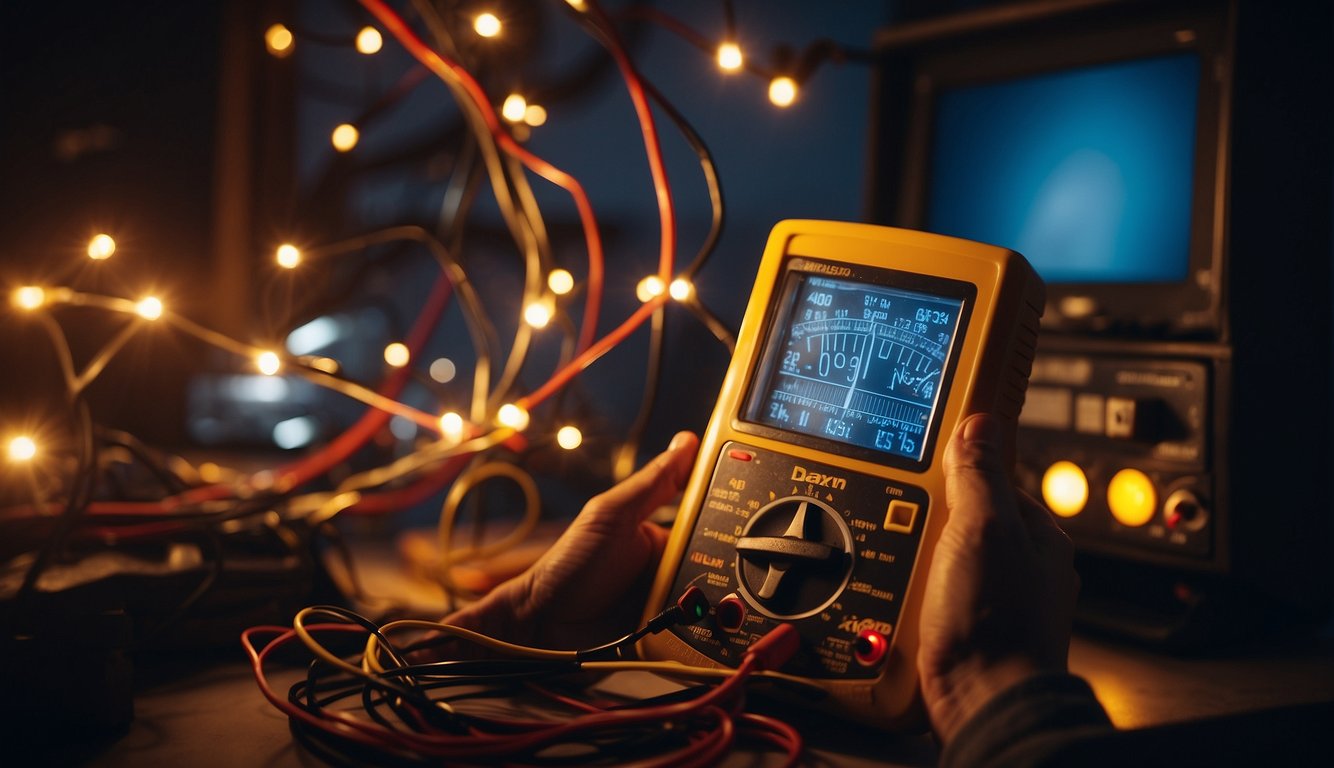
When I notice my RV lights dimming and brightening, I understand it’s a sign that something isn’t quite right with the electrical system. My first step in troubleshooting is checking the battery and charging system, and then testing the converter and electrical circuits to pinpoint the issue.
Inspecting the Battery and Charging System
The health of my RV’s battery is crucial for consistent lighting. I start by inspecting the battery terminals for any corrosion and making sure connections are tight. Using a multimeter, I check the battery voltage to ensure it’s holding a proper charge. If the batteries are older than four to five years, they might be due for replacement.
I also look at the charging system to ensure it’s properly recharging the battery after use; a malfunction here could lead to lighting issues. If I’m unsure, I might consult with an electrician who specializes in RVs.
Testing the Converter and Electrical Circuits
Next, I focus on the converter, which is responsible for supplying power to my lights and other appliances. A fluctuation in my RV lights could mean the converter isn’t operating correctly. With the multimeter, I test the output voltage of the converter; it should typically be around 13.5 to 14 volts.
If the reading is off, I consider getting the converter checked professionally. It’s vital to examine the circuit breaker and ensure no fuse is blown, as either can cause irregular lighting.
If I find any issues with the wiring, it might be time to call a professional, as improper handling of electrical components poses a risk. For more detailed insights, the insights from Outdoor Barren have been quite helpful to me.
Preventative Measures and Maintenance Tips
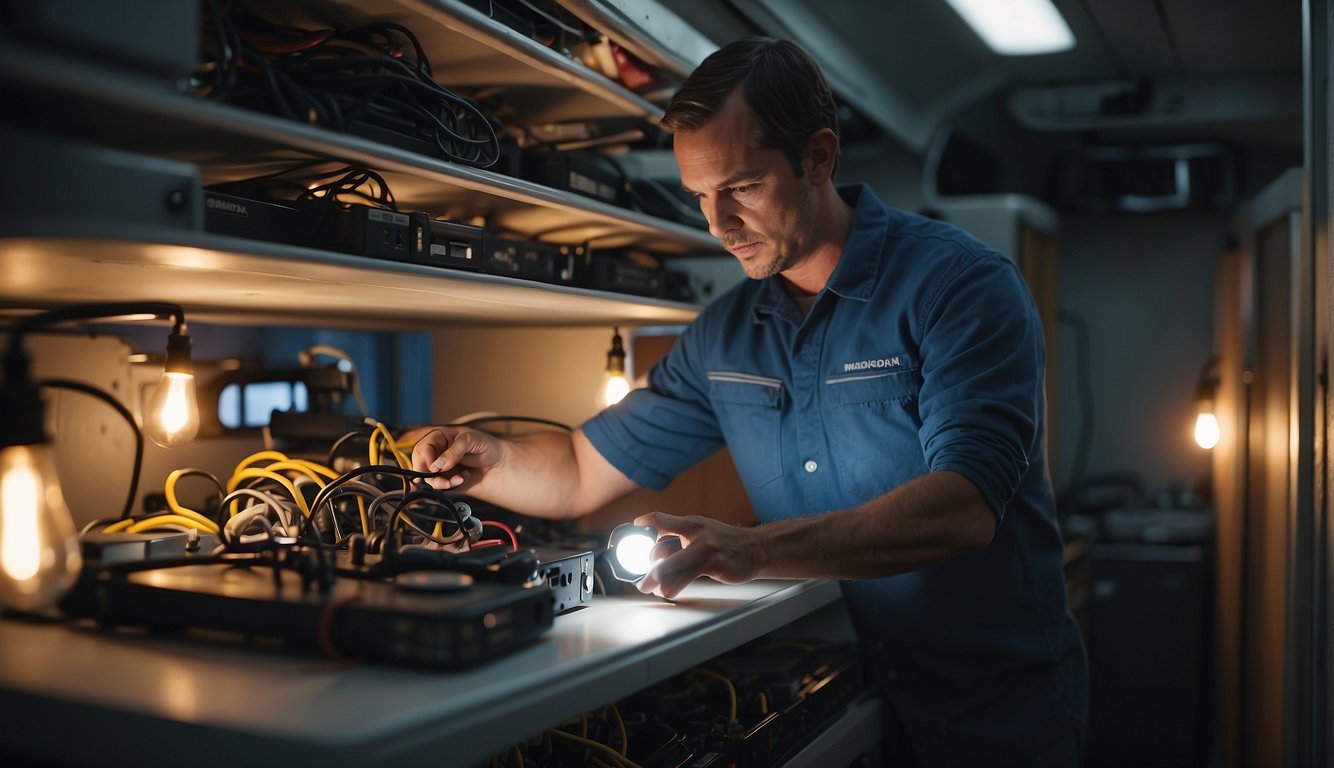
To keep my RV lights functioning smoothly, I focus on two key areas: maintaining my RV’s electrical health and staying current with component upgrades. Careful attention here helps prevent the annoyance of lights dimming and brightening unexpectedly.
Regular Battery and Electrical System Checks
I make it a routine to regularly inspect my RV’s battery and electrical system. I check the battery for proper charge and look out for any signs of wear or corrosion, especially at the connections. It’s also important to tighten any loose connections and clean off any corrosion I find.
- Inspect battery terminals: At least once a month
- Test battery charge: Before and after trips
- Check for corrosion: Terminals and cables
- Tighten connections: This ensures consistent power delivery
Upgrading Your RV’s Lighting and Electrical Components
Whenever possible, I upgrade to LED light bulbs, which are not only more efficient but also less likely to cause fluctuations in lighting due to their low power draw. Replacing old wiring and making sure that fixtures are in good condition is also a part of my upgrade process.
- Replace incandescent bulbs: Switch to LEDs for efficiency
- Evaluate wiring: Replace if aged or worn
- Inspect fixtures: Ensure they are secure and undamaged
By following these tips, I help ensure that my RV’s lighting remains steady and reliable.
When to Seek Professional Help

When I tackle RV electrical issues, I often find myself weighing the pros and cons of DIY troubleshooting against seeking professional help. In my experience, there are certain situations where calling in an expert is imperative.
Firstly, if I’ve gone through basic troubleshooting steps—like checking the battery, fuses, and power converter—and the problem persists, it’s a sign to contact a professional. These steps include:
- Ensuring all connections are secure
- Checking for visible damage to wiring
- Testing my RV’s battery and power converter with a multimeter
The electrical system in my RV is intricate, and a professional electrician can provide a thorough diagnostic that goes beyond my basic checks.
In cases where I observe consistent flickering or dimming even after replacing or charging the battery, it indicates a deeper issue. Maybe my RV’s electrical system has a hidden fault or there’s a complex problem with the power converter that’s beyond my skill level.
Another clear sign is if I notice burnt smells or discoloration around outlets, which could point to potential fire hazards. At this point, my safety and that of my RV are top priorities, so I wouldn’t hesitate to call a licensed electrician who specializes in RVs.
Lastly, although I am confident in my abilities to handle small repairs, I always remember that electrical work can be dangerous. If I’m ever in doubt or if the repair instructions seem confusing, I know it’s wise to reach out for professional help to ensure the well-being of my RV and myself.
Maximizing Comfort and Safety Onboard
As an RV enthusiast, I know that ensuring consistent lighting is crucial for both comfort and safety. Flickering or dimming lights can be a sign of underlying electrical issues that may affect my RV’s amenities.
Ensuring a Steady Power Supply
To maintain a reliable power supply, I regularly check my RV battery and converter. A healthy battery should not cause the interior lights to dim or flicker. If I notice fluctuations in lighting, it’s often a sign that I need to inspect these components.
For example, when my lights were acting up, I discovered that the issue was a faulty battery, which I then replaced. Similarly, if I find that my converter isn’t outputting a steady 13.6 to 13.8 volts, it’s often the culprit behind the inconsistent light intensity.
Managing Electrical Load and Appliances
Properly managing my electrical load is key to avoiding tripped circuits and overloads, which can cause light fluctuations. Here’s how I keep things running smoothly:
- I prioritize my appliance usage. If I need to use my microwave or AC system, I’ll make sure other high-power devices like the hairdryer are off.
- I’ve learned that regular checks on my outlets ensure they’re not loose or damaged, which helps prevent power issues.
- For appliances that have a high startup power demand, like my refrigerator or charger, I’m careful not to run them simultaneously unless my system can handle the load.
By managing my appliances and ensuring a steady power supply, I keep my RV’s interior lights, and therefore my onboard comfort and safety, at optimal levels.
- Why Do My RV Lights Dim and Brighten? Understanding Voltage Fluctuations - February 8, 2024
- What Happens When RV Furnace Runs Out of Propane: Avoiding the Chill on Your Trip - February 8, 2024
- How Much Does an RV Inspection Cost: Budgeting for Your Next Adventure - February 8, 2024

